In some of the blogs I wrote several weeks ago, I tried to let you in on some BtS ideas of why certain diorama scenes were created the way they were. Here is another fun tidbit – over each label describing species and habitat in Farish Hall of Texas Wildlife, there is a bird(s) flying overhead if you stop and look straight up! I tried to include all of the species of Texas falcons overhead (and was successful in most cases), along with two other species of raptors (hawks).

- A Merlin (Falco columbarius) glides gracefully over the High Plains, headed towards the horizon.
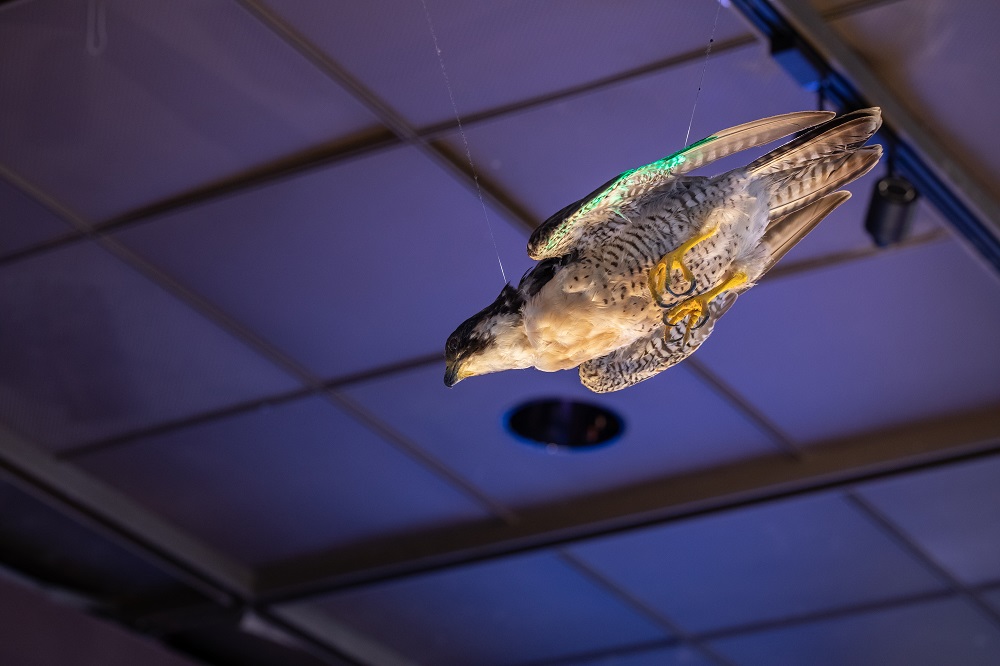
- A Peregrine falcon (Falco peregrinus) in death-pursuit dive-bomb towards Band-tailed pigeons (Patagioenas fasciata) sitting innocently in a Bigtooth maple (Acer grandidentatum); in Texas this tree found only in the Guadalupe Mountains here.
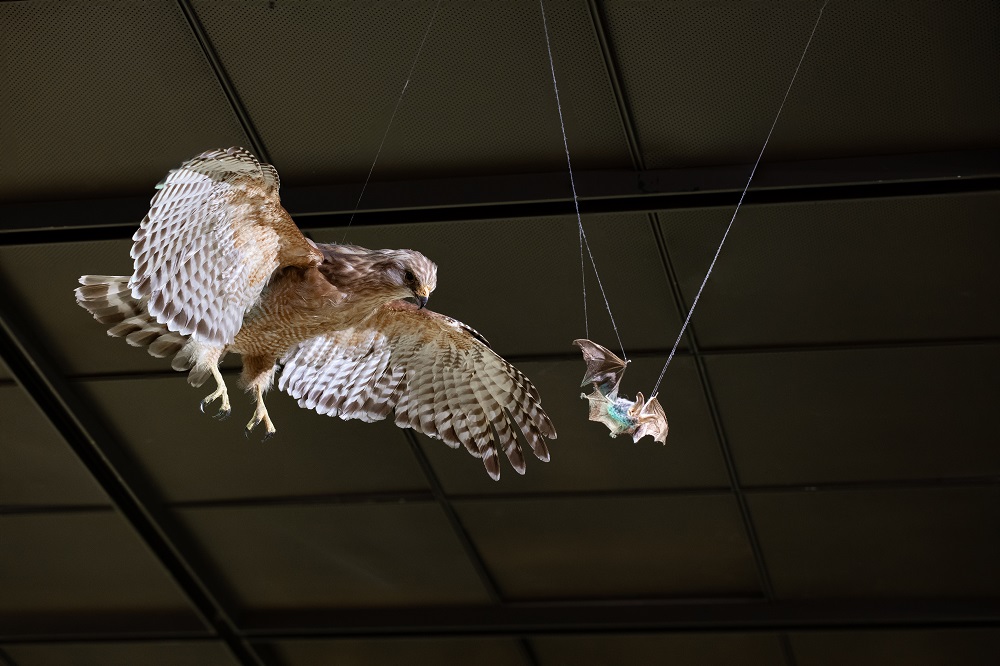
- In East Texas Piney Woods a Red-shouldered hawk (Buteo lineatus) is in hot pursuit of a threatened Rafinesque’s Big-eared bat (Corynorhinus rafinesquii). This was actually done as a monument of sorts to a study some interns and I were working on at the time that involved studying Swainson’s Hawks (Buteo swainsoni) predating Free-tailed bats (Tadarida mexicana) here in Houston at the Waugh street bridge.
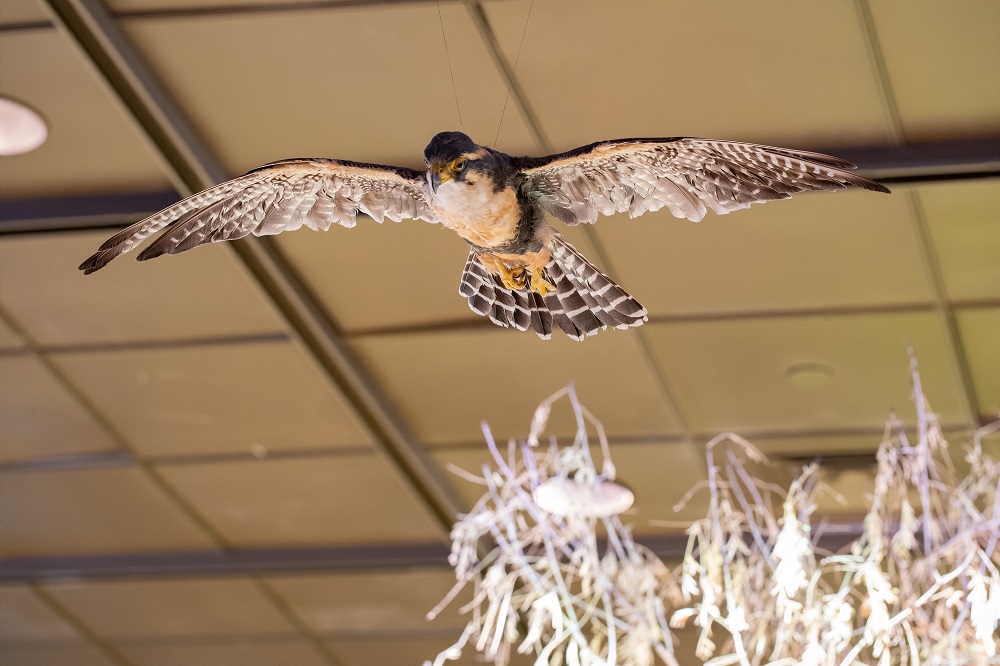
- Over the Rio Grande Valley Dry Forest label an Aplomado Falcon (Falco femoralis) soars – a rare species that was successfully reintroduced to South Texas by hacking captive- bred birds.

- A plethora of migrant songbirds fly over the Gulf of Mexico to land in Texas Coastal Oak Motte habitat… BUT one of several Indigo buntings (Passerina cyanea) gets caught in the talon of a hungry Cooper’s Hawk (Accipiter cooperii)!
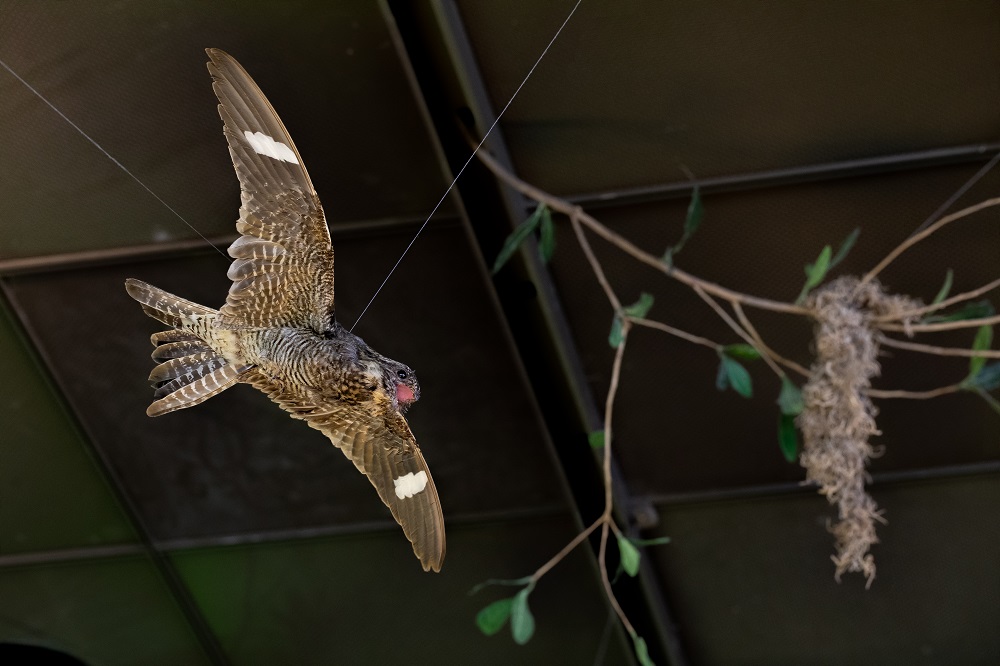
- Over the Coastal Prairie glides a different type of hawk – the Common nighthawk (Chordeiles minor) – actually not a type of hawk at all, but a Goatsucker (I swear, that’s the common name of the family) that is commonly heard at dusk all over Houston making its call that sounds like a rubber-band being snapped.
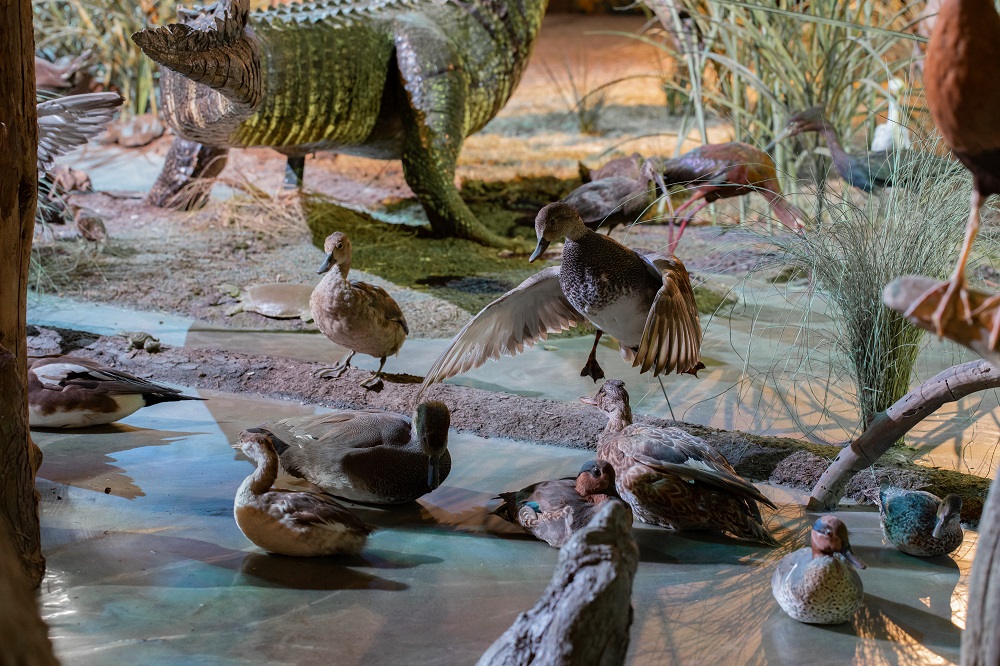
- COMING IN FOR LANDING(!!!) over the Coastal Wetland and Marsh is a flock of ducks, including several Green-winged (Anas carolinensis) and Blue-winged (A. discors) teal, and Northern Pintail (Anas acuta), among others.

